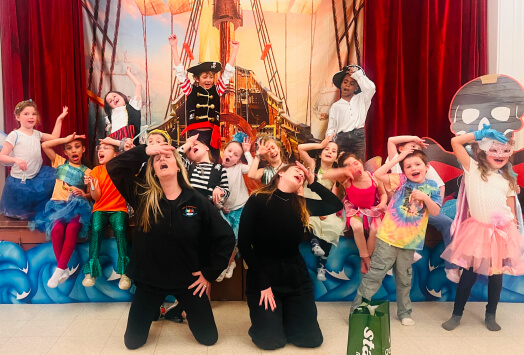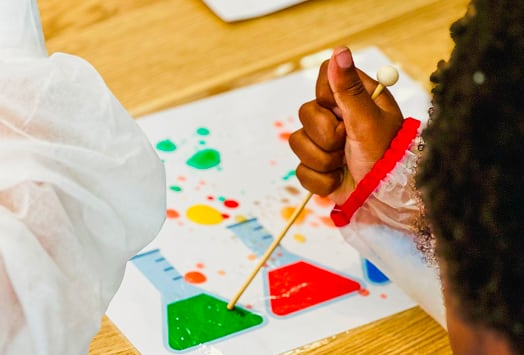Are you a meditation or yoga teacher with a passion for kids? If so, you’re in the right place. Teaching yoga and mindfulness to children can equip the next generation with tools to handle anxiety and cultivate happiness.
Deciding to launch a business teaching yoga and mindfulness classes for kids can be a rewarding journey. If you’re looking for where to start, this guide will help you lay the foundation for your children’s activity business.
1. Put together a business plan
If you’ve never designed a business, have no fear! Building a business plan should start by following a template. This will help you stay organized if you’re starting from scratch.
A business plan should have the following pieces:
- Executive summary: A simple summary of your business and its mission
- Company description: A longer description of your company and who and how you serve your community
- Market analysis: Research and findings focused on the demand for your business as well as competitors in your community and online.
- Organization and management: Explain who you employ, their role in your company, and who is responsible for what. If you don’t have employees yet, you can explain your many roles here.
- Services and products you offer: This section is for considerations like what do you teach? Do you sell any products? What kind of content do you specialize in?
- Marketing and sales plan: Add details on how you plan to market your business here. You can evolve this section over time, but we suggest using it to organize your marketing efforts.
- Financial projections: This section is for considerations like: how much money did you save or borrow to start this business? How much money do you expect to make?
We recommend spending time working on your business plan and being open to letting it evolve as your business starts and grows. Having a strong business plan can be helpful if you are taking out a small business loan, or having outside investment. It shows that you are serious, have professional experience in your field, and have a clear path to profitability.
2. Decide what you’ll teach
Once you have a plan, decide what you’ll teach. Here are some options to get you started.
- Yoga: Yoga means union in Sanskrit. If you’re already a yoga teacher, you know that yoga connects the body and mind to cultivate wellness and balance. If you want to become a yoga teacher for kids, you can look into professional certifications online and in-person.
- Meditation: Meditation is a practice that cultivates awareness and allows individuals to observe and understand their feelings without judgment. You can teach meditation by learning about and pursuing professional certifications if you wish.
- Mindfulness: Mindfulness is the result of many different practices, but is always rooted in the ability to be present in the here-and-now. Teaching mindfulness helps kids engage in the present, rather than the past or future. Meditation and yoga are great ways to teach children how to practice mindfulness.
- Movement: Movement — including yoga, contemplative walks, and dance — can help cultivate mindfulness. Teaching mindful movement can equip children to get back into their bodies when they feel stressed.
For more guidance on teaching yoga to kids, check out our full article with yoga poses, activities, and exercises for kids.
3. Decide how and who you will teach
Now that you’re determined what you’ll teach, it’s time to think about the who and the how.
Who
Here are some common age groups for mindfulness and yoga classes.
- Toddlers: Toddlers range from 1 year to 4 years of age. If you’re passionate about teaching yoga and mindfulness to little ones, consider teaching toddlers.
- Children: Children range from 5 to 11. Teaching school-age children about mindfulness and yoga can help equip them with a lifelong skill to cultivate joy and process stress.
- Preteens and Teens: This age group ranges from 12-17. Helping preteens and teens learn to manage stressors through mindfulness and yoga can help them adjust to growing up and finding their place n the world with confidence.
How
You can teach mindfulness and yoga in a few different formats.
- In-person: In-person classes will require a physical space, whether outdoors or indoors is up to you! The beautiful thing about yoga is that if you have a mat, you can practice anywhere. Consider community centers, churches, schools, and parks as potential options.
- Online: Teach mindfulness and yoga in live or pre-recorded classes digitally. Teaching online is great because you can teach anywhere you have wifi access, including your home!
- Both: By offering both online and in-person yoga and mindfulness classes, you can reach more students.
4. Build your brand and research your competition
To establish a yoga studio or mindfulness classes for children, you’ll need to create a brand. You’ll want to stand out from your competitors by highlighting what makes your business special — perhaps you are an expert at cultivating compassion, teach many different yoga styles, or have a theme that differentiates your classes from competitors in your community.
As you think through building a brand and business, brainstorm what you’ll want to name your business, what your business logo will look like, and how your business will reach customers.
5. Get ready to multitask
Launching online or in-person yoga or mindfulness classes for kids requires wearing many hats. To get ready, make sure you have skills in the following areas:
- Teacher: Whether you’ve taught for years or are just beginning, opening your own children’s activity business will involve teaching students. Make sure your certifications are up to date and you have client testimonials that speak to your skill as a teacher.
- Business manager: You’ll need to be prepared to work in every department of your business, including accounting, scheduling, communications, and customer service.
- Technology master: You’ll need to make sure you’re comfortable with using technology to teach classes, including speakers, registration software, and streaming tools.
- Role model: You’re about to start nurturing little hearts and minds with mindfulness! Remember that the children who take class at your future business will look up to you as a role model. It’s your job to set a good example, always.
If you feel like you need practice in these areas, you can investigate taking classes on professional development websites like edX and Lynda.
5. Get a payment processing and registration system
Once you’ve written a business plan and decided on an in-person or virtual location, you’ll need a way to collect student registrations and payments. When you’re teaching yoga and mindfulness classes, you’ll want your software partner to feel simple and straightforward so parents can discover and book your classes with ease. When you choose to partner with good registration software, you will also benefit from software automations, seamless banking, flexible payment options, and financial reporting to make it easier to analyze where your business is thriving and where more work needs to be done.
If you’re starting a children’s activity business, Sawyer for Business has everything you need to make registration easy for your team and your customers. See why thousands of businesses love Sawyer for Business and why you will too.
6. Connect with your community
Once you have a business plan, location, a team, and powerful registration software, you’ll be ready to start teaching. Our best advice is to connect with your community whenever and however you can. Consider joining local parent Facebook groups, partnering with your local business bureau, offering free trials, and consider hosting free events to get the word out. If you partner with Sawyer, you will get access to our Marketplace with hundreds of parents looking to book your classes. Connecting with your community is key to unlocking success for years to come!
We can’t wait to see how your business grows! To get more information on launching your children’s activity business for kids, connect with a member of our team today.





















.png)















.avif)




